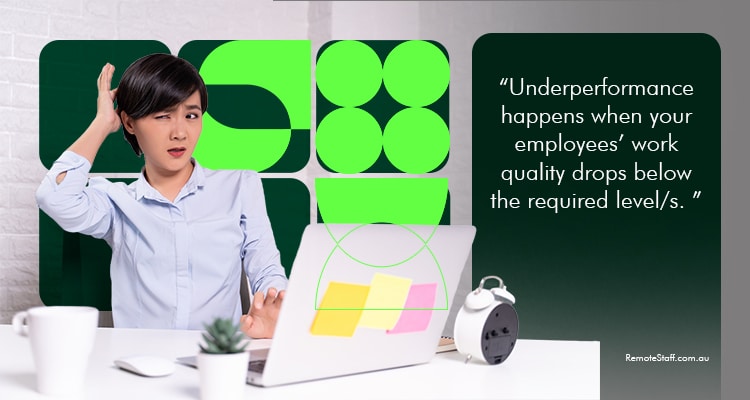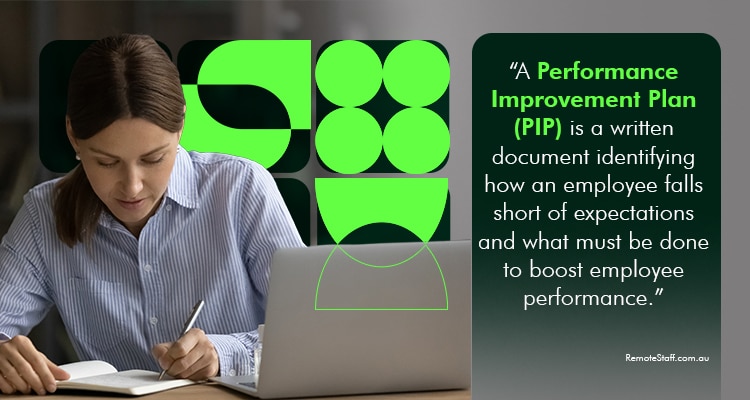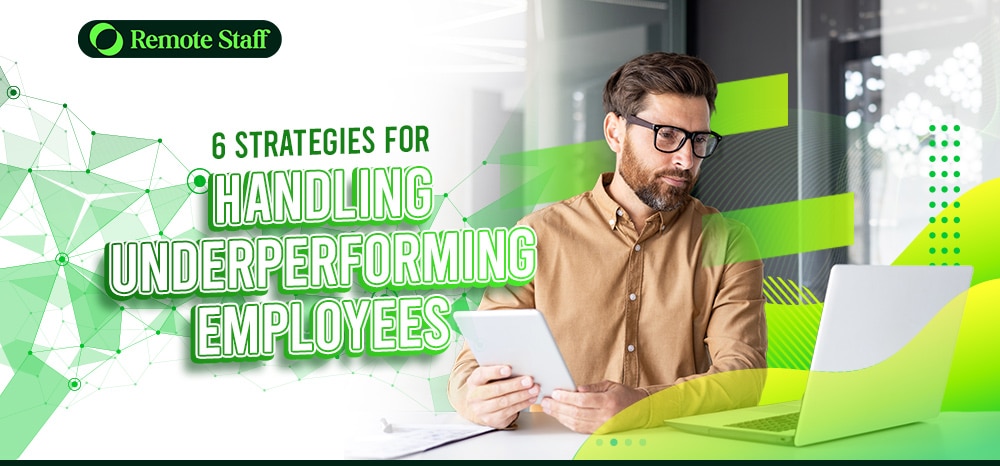Maintaining a high-performance team is vital to success in the modern business environment.
However, even the best teams can have one or two members who aren’t at par with the rest.
Perhaps your new virtual assistant has been missing a lot of their deadlines lately. Or, your admin assistant continuously turns in inconsistent output based on their last employee performance review.
Handling these underperforming employees requires a careful and delicate approach to determine whether they only need a bit of extra help to get back on track – or if they’re no longer a good fit for your team.
Here are some strategies you can use to address underperformance at work.
What is Underperformance?
In a nutshell, underperformance happens when your employees’ work quality drops below the required level/s.

It can also manifest as noncompliance with work policies or unsatisfactory and/or disruptive behavior that affects other employees.
Identify the Cause of Their Underperformance
The first step to handling underperforming employees is diagnosing the reason for their drop in performance.
Some might not have the necessary skills for their new responsibilities. Others might currently be experiencing personal issues affecting their performance.
Thus, it’s best to conduct a one-on-one meeting with the person in question to discuss the issue. Once you identify the underlying issue/s, you’re better equipped to formulate an improvement plan for them.
Clarify Expectations and Performance Goals
Vague expectations and responsibilities at work is also a common cause of employee underperformance.
Thus, review your expectations and performance goals with your employee during your one-on-one. This helps them better understand their role and identify areas for improvement.
Additionally, you should also assess your expectations and performance goals for them. Are the goals you’ve set relevant to their role? Are they achievable within the time you allotted?
Develop a Performance Improvement Plan (PIP)
After identifying the source of your employee’s underperformance and discussing areas for improvement, you can formulate a Performance Improvement Plan.
A Performance Improvement Plan (PIP) is a written document identifying how an employee falls short of expectations and what must be done to boost employee performance.

PIPs serve as a roadmap for your underperforming employee and a formal record of the steps to resolve the issue.
Schedule another meeting with your employee to discuss the PIP’s contents so they can provide feedback and ask questions.
Once they’ve read through the PIP, you and your employee should sign it together to acknowledge their understanding and commitment.
Ensure Regular Check-Ins and Follow-Ups
Continuous feedback is vital for fostering improvement.
Schedule regular check-ins with your underperforming employee to monitor and provide feedback on their progress toward the PIP’s objectives. Depending on your schedules, these check-ins can be weekly, biweekly, or monthly.
Keep feedback specific and constructive to provide actionable direction.
You may also opt to provide extra training if you deem it necessary.
Reward Improvement
Celebrating your employee’s progress further motivates them to keep improving.
It doesn’t have to be grand; even a simple “good job” or “congratulations on your progress” means a lot to them.
Aside from motivating them to continue working hard, it also shows you’re paying attention to your employees’ progress, which boosts employee morale and retention.
If All Else Fails…
However, if no progress is made after all the support you provided, you’re left with two options:
- The first option is to transfer them to a different position within the company that better suits their current skills, or
- If you’ve exhausted all options to help them with no significant improvements, it’s time to let this employee go.
Firing an employee isn’t ideal, but so is letting underperforming employees continue working without repercussions. Doing so slows your company’s growth and sends the wrong message to the rest of your team.

Handling Underperforming Employees the Right Way
Dealing with underperforming employees can be tricky and time-consuming.
That said, by following the strategies above, it’s possible to convert an underperformer into an invaluable member of your team.
Looking for skilled Filipino remote contractors to help you grow your business? Click here to see our full list of candidates and start outsourcing to the Philippines. Good luck!
John Carlo Pagsolingan is a carefree yet hardworking writer with aspirations of becoming a teacher in the future. He believes that remote working isn’t just a substitute; but is a legitimate alternative to face-to-face work. Learn more as he writes about the advantages of remote work and tips for aspiring remote workers.





















